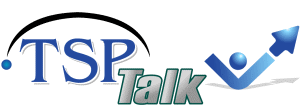 Re: Bear Cave 2 (Bull Allowed)
Re: Bear Cave 2 (Bull Allowed)
Part (3 of 6)
Today's first main topic is Roth, part three.
In part one of my Roth discussion I summarized the compelling advantages of establishing Roth accounts; in part two I discussed regular and back-door Roth IRA contributions. In the paragraphs below I will discuss Roth contributions if you work as an employee for a company where you are not one of the company's owners.
You may be able to contribute to a Roth retirement plan with your employer including matching contributions.
Many U.S. employers offer retirement plans to their employees. With such a plan, often called a salary-reduction scheme, you can put some of your paycheck into a 401(k), 403(b), 457, or similar account. Your employer may or may not "match" some amount of your contribution with their money which then becomes yours. Your investment choices may be narrow or wide ranging depending upon your employer. As long as you remain employed with your firm you are required to follow their rules for these accounts; once you are no longer an employee you can do what you want with such an account, either keeping it with your employer's custodian or doing a transfer.
Below are the recently-announced maximum amounts permitted to be contributed into these plans for 2021:
IRS Announces 2021 Retirement Plan Contribution Limits for 401(k)s and More
Make sure you get your employer's full matching contribution.
Be certain to contribute enough to your company's retirement plan so you get the full amount of your employer's maximum match. This varies considerably from one employer to another so be sure to ask. If you don't use up your full match then it's like throwing away free money.
If your employer offers a Roth 401(k) or Roth 403(b) then select that instead of the traditional variety.
There are numerous advantages to contributing the maximum to a Roth retirement plan instead of a non-Roth or traditional contribution. The biggest advantage is that all non-Roth money will eventually be taxed upon withdrawal, and all gains will be similarly taxed at ordinary income rates. If you invest the money and achieve long-term capital gains and/or qualified dividends then unlike a taxable account you won't get a reduced federal tax rate like 15%. Instead you'll have to pay your federal marginal tax rate upon withdrawal. In addition, if you take money out of a non-Roth retirement account then your higher income will cause your Social Security and other pension income to be more heavily taxed. Only about half of employers offer Roth retirement choices for their employees so be sure to check.
One important exception to the "Roth is better" rule is if you are in an unusually high tax bracket in a given year which you don't expect to be repeated. In such a year it may make sense to reduce your taxable income when your marginal rate is above average in anticipation of eventually withdrawing the money at a lower rate.
The SECURE Act greatly increases the desirability of all Roth retirement accounts.
The SECURE Act mandates that heirs of any retirement account who are more than ten years older than the deceased account holder must withdraw all of the money and put it into a regular account within ten years. Someone who inherits your Roth account, if they are sufficiently disciplined, can keep the entire account intact and invest it as they wish in order for it to grow for ten years after your death. At that point they have to transfer the money into a regular account. If that person inherits a non-Roth retirement account from you then they must similarly distribute all of the funds within ten years--and thereby pay tax on all of those withdrawals as ordinary income. This makes all Roth accounts far more favorable relative to non-Roth accounts which are otherwise identical.
If you have a retirement account with a former employer then you can make a double transfer at any time.
Once you are no longer with a given employer then you no longer have to keep your money in their chosen retirement-account plan with its custodian and limited allocation choices. You can make a double transfer: transfer the before-tax amount into a traditional IRA with any custodian and the after-tax amount into a Roth IRA. I did this with my previous employer a few months after I was no longer working there.
“There is only one side to the stock market; and it is not the bull side or the bear side, but the right side” Jesse L. Livermore


 Likes:
Likes: 


 Reply With Quote
Reply With Quote Tom
Tom



Bookmarks